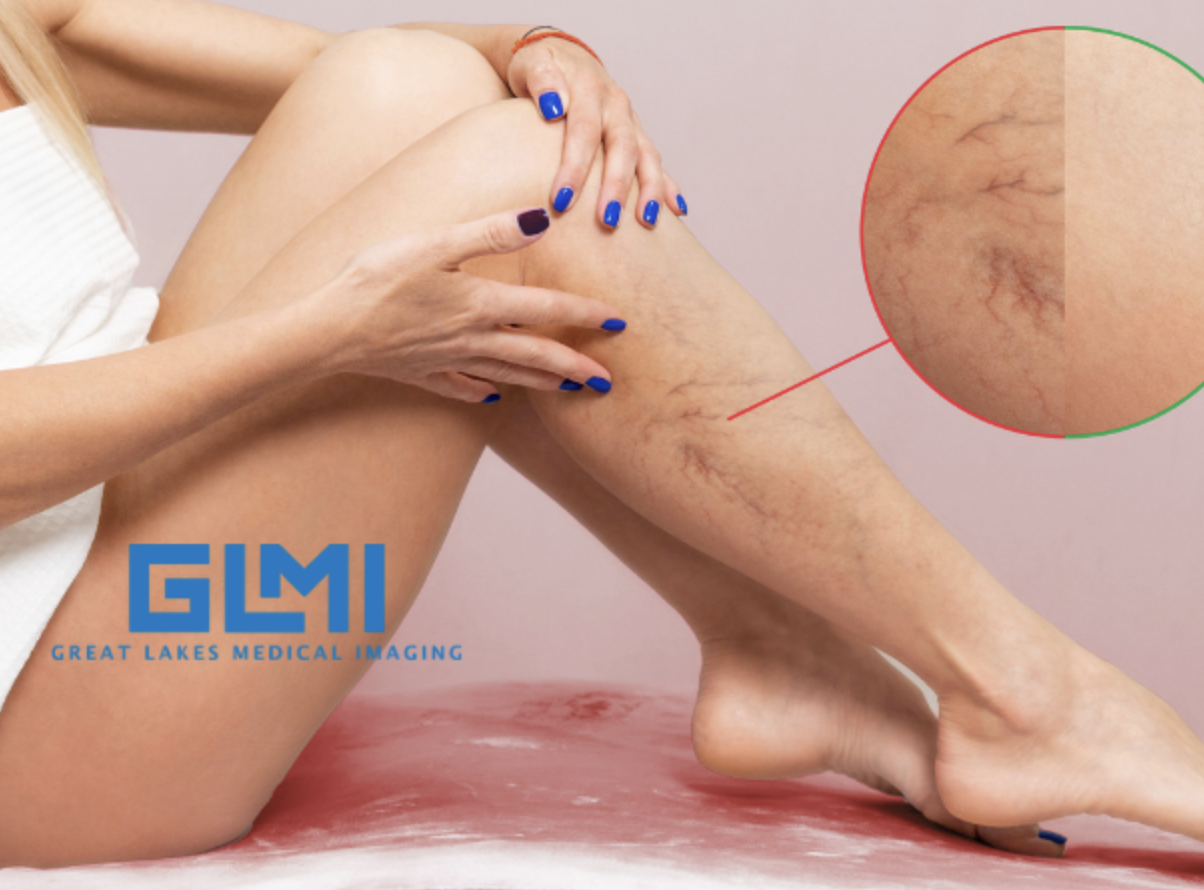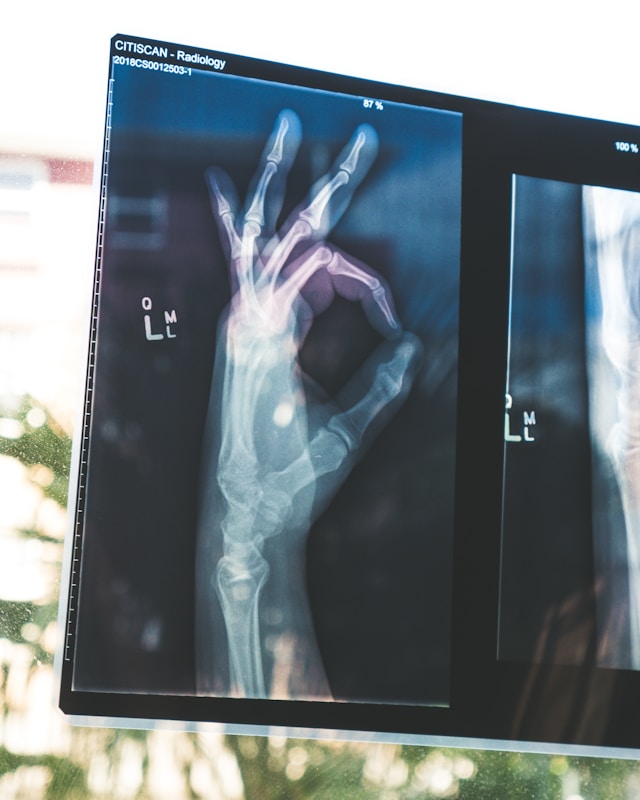Our Blog
How Often Should You Schedule an X-Ray for Chronic Pain Management?

hronic pain can have a significant impact on daily life, affecting everything from mobility to overall quality of life. Managing chronic pain effectively requires an individualized treatment plan that often includes periodic imaging to monitor underlying issues. X-rays are one of the most commonly used diagnostic tools in pain management, as they provide clear images of bones and joints, helping to identify or track conditions that contribute to chronic pain. At Great Lakes Medical Imaging (GLMI) in Buffalo, NY, and Western NY, we offer comprehensive imaging services to support patients in managing their chronic pain.
In this article, we’ll explore how frequently you should schedule X-rays for chronic pain management, factors that influence the frequency of imaging, and why regular imaging can be essential for effective pain relief.
How X-Rays Help in Chronic Pain Management
The Role of X-Rays in Diagnosing Pain Sources
X-rays are a powerful tool for diagnosing conditions that may be causing chronic pain, such as arthritis, fractures, spinal alignment issues, or other skeletal abnormalities. By providing clear, detailed images of bones and joints, X-rays allow doctors to identify issues that might not be immediately apparent through a physical exam alone.
X-rays are particularly effective for detecting:
- Arthritis: X-rays can reveal joint space narrowing, bone spurs, and other changes that indicate arthritis, a common cause of chronic joint pain.
- Fractures or bone injuries: For patients with chronic pain following an injury, X-rays can help identify fractures or bone healing issues.
- Spinal conditions: X-rays of the spine can reveal alignment issues, disc degeneration, and other problems contributing to back or neck pain.
By understanding the underlying cause of pain, healthcare providers can design a more effective treatment plan tailored to each patient’s needs.
Monitoring Disease Progression and Treatment Effectiveness
For many chronic pain conditions, such as arthritis or degenerative disc disease, the condition can worsen over time. Regular X-rays allow healthcare providers to monitor changes in the joints or spine, track disease progression, and assess how well treatments are working. If an X-ray shows that the condition is worsening, doctors may recommend adjusting the treatment plan to provide better pain relief.
How Often Should You Schedule X-Rays for Chronic Pain?
Frequency Depends on the Underlying Condition
The frequency of X-rays for chronic pain management depends on the condition causing the pain, its progression, and the current treatment plan. Here are some general guidelines:
- Arthritis: For conditions like osteoarthritis or rheumatoid arthritis, annual or bi-annual X-rays may be recommended to monitor joint changes and determine whether additional interventions are needed.
- Chronic back pain: If chronic back pain is caused by conditions like degenerative disc disease, spinal stenosis, or alignment issues, X-rays may be scheduled every 6-12 months, depending on symptom severity and progression.
- Post-injury monitoring: For chronic pain stemming from a previous injury, such as a fracture or joint injury, X-rays may be needed more frequently in the initial stages of healing to ensure proper recovery. After that, annual X-rays may be sufficient to monitor for any lasting changes or complications.
Your healthcare provider will determine the appropriate frequency for X-rays based on your specific condition and treatment response.
Factors Influencing the Need for Regular X-Rays
Several factors affect how often X-rays are needed, including:
- Severity of symptoms: If pain levels increase or if new symptoms develop, an X-ray may be needed sooner to evaluate potential changes or new issues.
- Response to treatment: For patients undergoing specific treatments, such as physical therapy or joint injections, X-rays can assess whether these interventions are helping slow disease progression or improve alignment.
- Age and lifestyle: Younger patients with chronic pain may need less frequent X-rays if their condition is stable, while older patients may need more regular monitoring as bone and joint conditions can progress more quickly with age.
At GLMI, our team works closely with patients and their healthcare providers to establish an imaging schedule that aligns with their specific needs.
The Benefits of Regular X-Rays in Chronic Pain Management
Early Detection of Disease Progression
One of the primary benefits of regular X-rays for chronic pain management is the ability to detect changes before they lead to a significant increase in pain or disability. By monitoring joint space narrowing, bone changes, or spinal alignment, doctors can adjust treatment plans early, helping to prevent further damage and manage symptoms effectively.
Tailored Treatment Adjustments
With regular imaging, healthcare providers can see how well a treatment plan is working. For example:
- Medication adjustments: If X-rays show that arthritis is worsening, your doctor may recommend stronger anti-inflammatory medications or other treatments to slow progression.
- Physical therapy modifications: X-rays can reveal if alignment issues are improving with therapy, allowing therapists to adjust exercises to provide better support and pain relief.
- Surgical planning: For patients considering surgical options, regular X-rays provide essential information that helps surgeons plan the most effective approach.
Reducing the Need for More Invasive Testing
X-rays are a low-risk, non-invasive option for tracking changes over time. By providing a clear picture of the bones and joints, regular X-rays can reduce the need for more invasive procedures, such as exploratory surgery or extensive blood tests, to determine the cause of worsening symptoms.
Is There a Risk to Frequent X-Rays?
Balancing Frequency with Safety
While X-rays involve exposure to low levels of radiation, the benefits often outweigh the risks, especially when used sparingly and as part of a targeted pain management strategy. At GLMI, we use modern X-ray technology designed to minimize radiation exposure, ensuring that you receive safe and effective imaging.
For chronic pain patients who require regular monitoring, your healthcare provider will consider the minimum necessary imaging frequency to provide adequate care while keeping your safety in mind. Alternative imaging methods, such as ultrasound or MRI, may also be considered if more detail is needed without repeated radiation exposure.
When Should You Consider Additional X-Rays?
Signs That You May Need an X-Ray Sooner
While your provider will set a general schedule for X-rays based on your condition, there are times when additional imaging may be necessary. Contact your healthcare provider if you experience:
- Increased pain or swelling: If you notice an increase in pain, swelling, or other symptoms, an X-ray can help determine if the underlying condition has progressed or if new issues have developed.
- Reduced mobility: Difficulty moving a joint or performing daily activities may indicate further degeneration, making an X-ray helpful for adjusting your treatment plan.
- New symptoms: Numbness, tingling, or weakness could signal nerve compression or other complications requiring prompt imaging.
Regular communication with your healthcare provider ensures that your X-ray schedule aligns with any changes in your symptoms, helping you receive timely and appropriate care.
Why Choose GLMI for X-Rays in Buffalo, NY?
State-of-the-Art Imaging Technology
At Great Lakes Medical Imaging, we use advanced X-ray technology to provide high-quality images with minimal radiation exposure. Our state-of-the-art equipment ensures accurate diagnoses and effective monitoring for chronic pain management.
Experienced Radiologists
Our board-certified radiologists have extensive experience interpreting X-ray images for patients with chronic pain conditions. Their expertise allows for accurate and timely diagnoses, helping your healthcare provider design a treatment plan tailored to your needs.
Convenient Locations Across Western NY
With multiple locations throughout Buffalo, NY, and Western NY, GLMI makes it easy for you to access X-ray services close to home. Our convenient scheduling and compassionate team make each visit as comfortable and efficient as possible.
Take Action Today
Schedule Your X-Ray Appointment
If you’re managing chronic pain, regular X-rays can be essential to understanding and addressing your condition. Contact us today to schedule your X-ray appointment at Great Lakes Medical Imaging. Our team is here to support you with expert imaging and compassionate care.
Consult with Your Healthcare Provider
If you have questions about how often you should schedule an X-ray or want to discuss changes in your symptoms, consult with your healthcare provider. They can guide you on the best imaging schedule for your specific condition, helping you manage your chronic pain effectively.
Contact Us for Comprehensive Imaging Services in Buffalo, NY
At GLMI, we are dedicated to providing high-quality imaging services to help chronic pain patients monitor their condition and receive the care they need. Our advanced technology, experienced team, and commitment to patient-centered care ensure that your imaging experience is comfortable and efficient. If you have any questions or need to schedule an appointment, please contact us today.
Medical Disclaimer
This article is for general informational purposes only and is not a substitute for professional medical advice. Always consult with a qualified healthcare provider regarding any medical conditions or concerns you may have.
‹ Back









